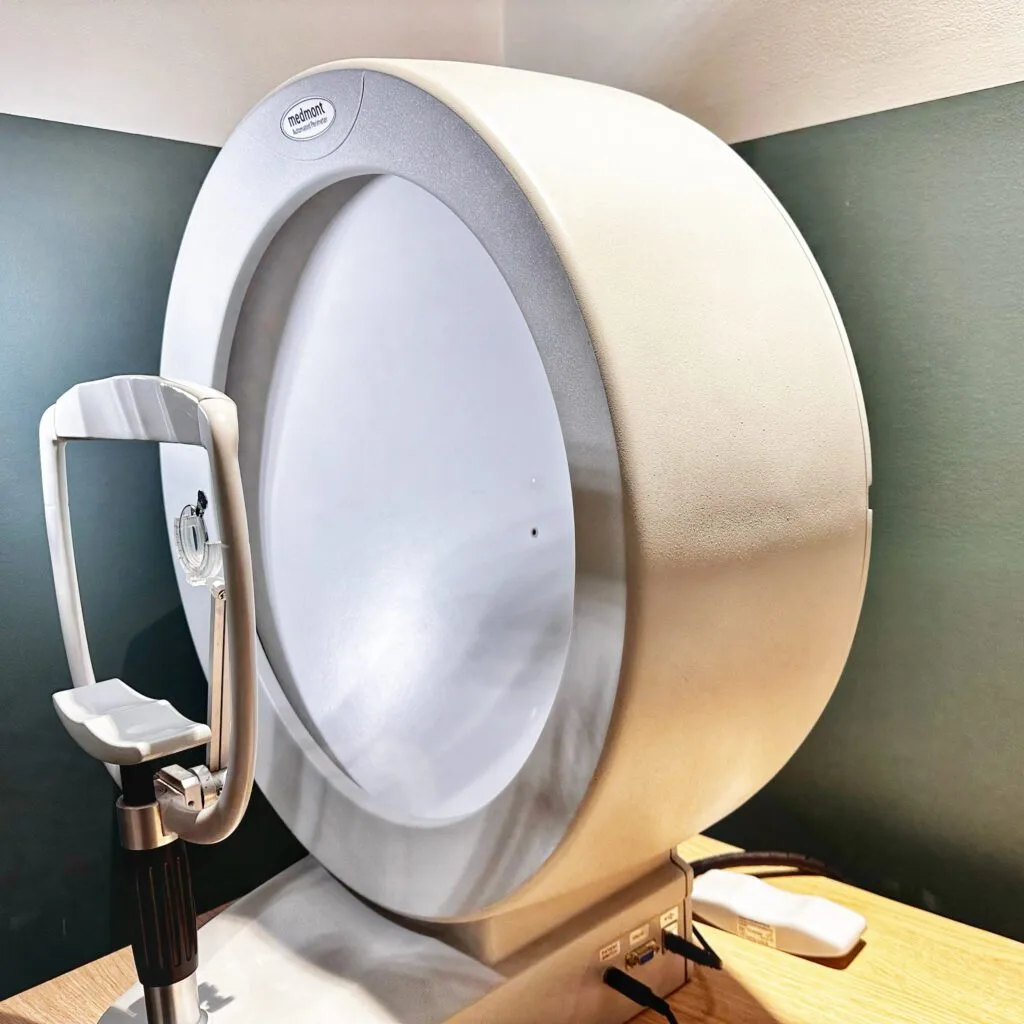
Why is it important to do perimetry?
Your vision is much more than just seeing clearly straight ahead. It includes your “peripheral vision” – everything you can see to the sides, above, and below your central focus. This entire area is called your visual field.
Just like you wouldn’t drive a car only looking straight ahead, a healthy visual field is crucial for everyday activities like walking without bumping into things, reading, driving, and even recognizing faces in a crowd.
Perimetry is a specialized eye test that carefully maps out your entire visual field. It helps your eye care professional detect subtle changes or blind spots that you might not even be aware of, as they often develop slowly and painlessly. Early detection is key to protecting your precious eyesight!
What conditions can be managed with Perimetry?
The Medmont M700 Perimeter is a highly advanced diagnostic tool that helps your eye care professional monitor and manage a variety of eye conditions, including:
- Glaucoma: This is often called the “silent thief of sight” because it can cause irreversible vision loss without noticeable symptoms in its early stages. Perimetry is essential for diagnosing glaucoma and tracking its progression, allowing for timely treatment to preserve your vision.
- Neurological Conditions: Problems with your brain or optic nerves (the nerves connecting your eyes to your brain) can affect your visual field. Conditions like strokes, brain tumors, multiple sclerosis, and optic neuritis can all be detected and monitored with perimetry.
- Retinal Conditions: Certain diseases affecting the retina, the light-sensitive tissue at the back of your eye (e.g., retinitis pigmentosa, drug toxicity), can also lead to visual field defects.
- Other Conditions: Perimetry can also be useful in assessing vision for certain legal requirements (e.g., driving licenses) and in monitoring the side effects of some medications that can impact vision.
By regularly performing perimetry, your eye care professional can identify changes early, leading to more effective management and better long-term visual outcomes.
What to expect during a perimetry assessment?
The Medmont M700 Perimeter is a comfortable and straightforward test. Here’s what you can expect:
- Preparation: You’ll be asked to sit comfortably in front of a dome-shaped instrument. One eye will be covered while the other eye is being tested.
- The Test: You’ll look at a central fixation light inside the dome. Small, dim lights will flash randomly in different locations within your visual field.
- Responding: Your task is simple: whenever you see a light flash, you’ll press a response button. It’s important to keep looking at the central fixation light throughout the test.
- Duration: Each eye typically takes about 5-10 minutes to test, depending on the specific test protocol. The entire assessment for both eyes will usually be completed within 20-30 minutes.
- Comfort: The Medmont M700 is designed for patient comfort. You can blink normally, and if you need to take a break, just let the staff know.
- Results: The results of your perimetry test will provide valuable information to your eye care professional, helping them understand your visual field and make informed decisions about your eye health. They will discuss the findings with you after the test.

Meet Our Optometrists: Tom Roger & Tobin Eapen
The Eyecare Eyewear Optometry Team has been trained to provided you with comprehensive, personalised advice regarding your current and future visual needs. The combination of years of experience and an accomplished, professional optical dispensing team means that you will receive the highest level in vision care and ocular disease management.